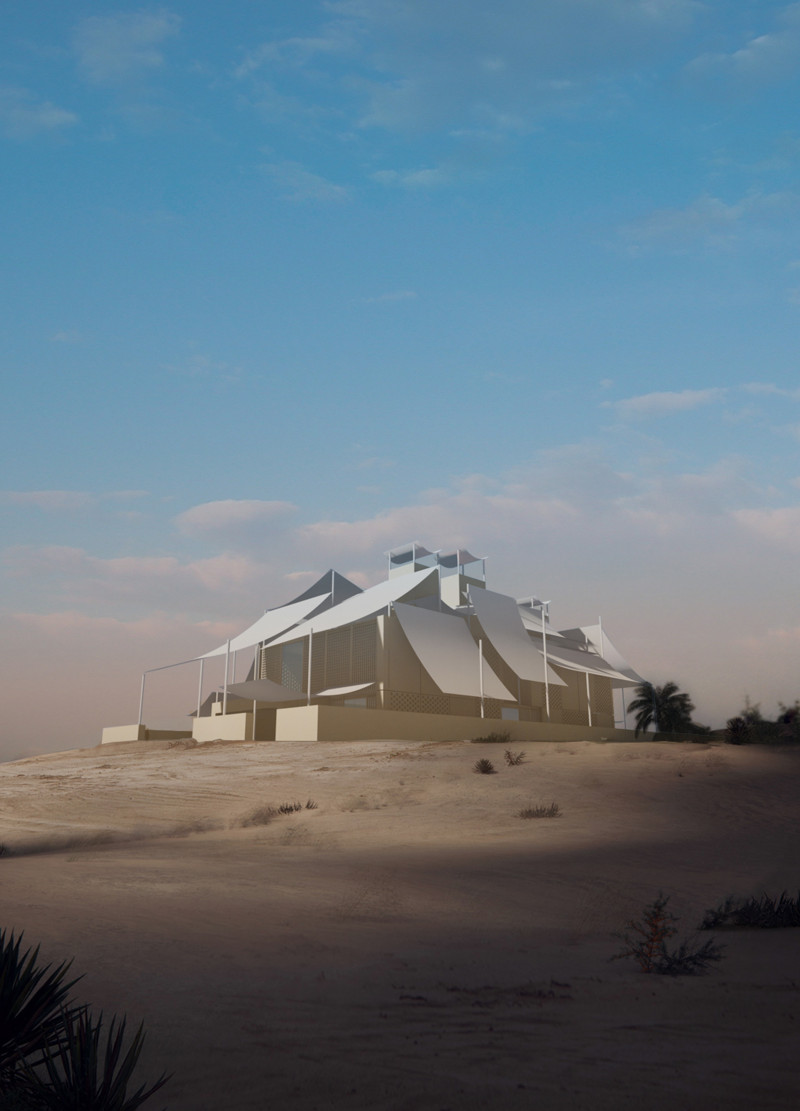5 key facts about this project
The project is strategically situated in [insert location], a setting that plays an essential role in shaping its design language. The architecture takes cues from the local climate and cultural landscape, creating a structure that is not merely a physical entity but a reflection of its geographic and social context. The building’s facade, characterized by a blend of materials such as concrete, glass, and wood, seeks to establish a dialogue with the landscape. The choice of materials, each with their unique textures and properties, complements the surrounding environment while contributing to the overall sustainability of the project.
The overall function of the architecture is multifaceted. It aims to provide spaces for commercial activities, community gatherings, and public engagement, making it a vital part of the urban fabric. The design is marked by open, flexible floor plans that allow for adaptability, enabling different uses over time. This adaptability is essential in creating a welcoming atmosphere that encourages community interaction. Large glass panels punctuate the facade, facilitating natural light infiltration and fostering transparency between the interior spaces and the external environment. This connection to nature is emphasized through well-designed outdoor areas that extend the usable space of the architecture.
Key elements of the project include strategically placed communal areas designed to promote social interaction. These spaces align with the principles of biophilic design, which advocate for incorporating natural elements into the built environment. Features such as green terraces and landscaped courtyards enhance the user experience by offering peaceful retreats while reinforcing the project’s connection to nature. The integration of native plantings not only adds aesthetic value but also contributes to local biodiversity, making the architecture responsive to its ecological context.
One of the noteworthy approaches in this project is its emphasis on sustainability. The design incorporates renewable energy strategies, such as rooftop solar panels and rainwater harvesting systems, demonstrating a commitment to reducing the environmental footprint. The careful selection of materials further highlights this sustainable ethos, with an emphasis on locally sourced and durable materials that minimize transportation impacts and support the local economy. Additionally, passive design strategies, including natural ventilation and thermal mass, are utilized to enhance energy efficiency, underscoring the architecture’s forward-thinking approach.
The building's volume and massing also play a significant role in its overall impact. The design avoids overly large or imposing structures by employing a human-scale approach that encourages pedestrian accessibility. The architectural language combines a range of heights and forms, allowing the project to blend seamlessly into the existing streetscape. This approach not only creates visual interest but also fosters an inviting atmosphere for the community.
In comparison to typical commercial spaces, this architecture offers a unique perspective on community engagement through design. It serves not just as a place of commerce but as a venue for cultural exchange and community activities, further establishing its role as a civic landmark. The thoughtful planning of its layout promotes user interaction, while also allowing for diverse programming that can adapt to the evolving needs of the community over time.
For those interested in delving deeper into the architectural design, exploring the architectural plans, sections, and details will provide a comprehensive understanding of the project's intricacies. The interplay of architectural ideas, materiality, and spatial organization merits further examination to appreciate the thoughtful decisions that underpin this compelling architectural work. Investigating these elements will reveal the nuances that make this project a significant addition to the architectural discourse in its locality.


























